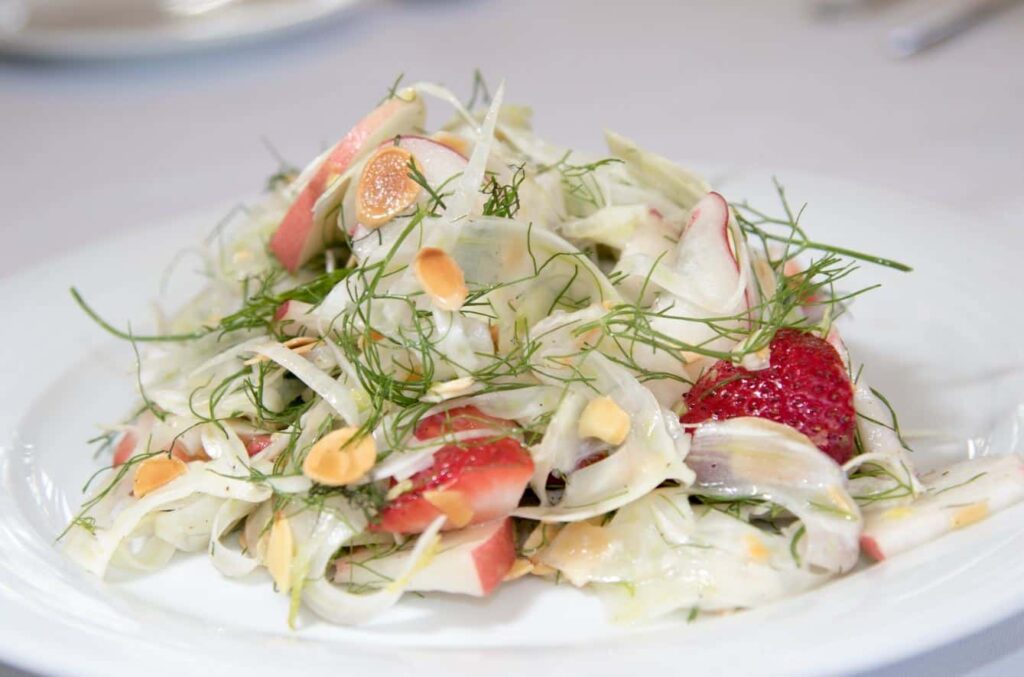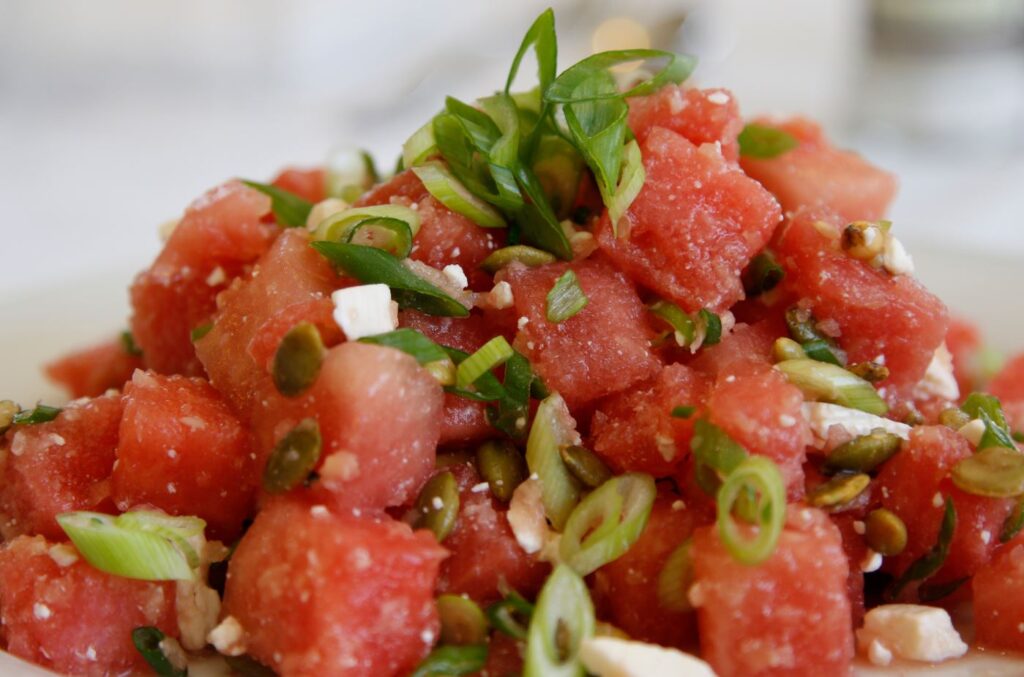Executive Chef, Timothy Pearce
Recovery from addiction is a transformative journey that requires comprehensive support, and one of the foundational pillars of this support is nutrition. Fresh fruits and vegetables play a pivotal role in this journey, offering essential nutrients, hydration, and numerous health benefits that aid in physical healing and emotional well-being.
Let’s explore why nutrition in recovery is critical and how incorporating fresh fruits and vegetables into a diet is beneficial for overall health and recovery success.
Nutritional Power of Fresh Fruits and Vegetables
- Vitamins and Minerals: Fresh fruits and vegetables are rich sources of vitamins (such as vitamin C, vitamin A, and various B vitamins) and minerals (like potassium, magnesium, and folate). These nutrients are vital for supporting immune function, repairing tissues, and promoting overall cellular health, all of which are essential during recovery.
- Antioxidants: Many fruits and vegetables are packed with antioxidants, such as flavonoids, polyphenols, and carotenoids. These compounds help to neutralize harmful free radicals in the body, reduce inflammation, and protect cells from damage, which can be particularly beneficial during the healing process.
- Hydration: Fruits and vegetables have high water content, which contributes to hydration. Proper hydration is essential for maintaining bodily functions, supporting detoxification processes, and improving overall energy levels.
- Fiber: Both fruits and vegetables are excellent sources of dietary fiber. Fiber aids in digestion, helps regulate blood sugar levels, and promotes a feeling of fullness, which can support healthy eating habits and weight management during recovery.
Psychological and Emotional Benefits
- Mood Enhancement: Nutrient-dense fruits and vegetables can positively impact mood and mental health. For instance, fruits like berries and citrus fruits provide vitamin C, which is known to support neurotransmitter function and reduce symptoms of depression and anxiety.
- Coping Mechanism: Engaging in meal planning and preparation can be a therapeutic activity, promoting mindfulness and enhancing coping skills. It provides an opportunity to focus on self-care and nutrition, essential recovery aspects.
Practical Tips for Incorporating Fresh Fruits and Vegetables
- Variety: Aim for a rainbow of colors in your fruits and vegetables to ensure a diverse range of nutrients. Include fruits like berries, apples, and bananas, and vegetables like leafy greens, carrots, peppers, and cruciferous vegetables like broccoli and cauliflower.
- Seasonal and Local: Choose seasonal and locally grown produce when possible, as they often have higher nutrient content and better flavor. Visit farmers’ markets or consider joining a community-supported agriculture (CSA) program to access fresh, local produce.
- Preparation Methods: Enjoy fruits fresh as snacks or in smoothies, and incorporate vegetables into meals by steaming, roasting, or sautéing them with herbs and spices. Experimenting with different cooking methods can enhance flavors and textures.
- Snacking Options: Keep fresh fruits and pre-cut vegetables readily available for convenient snacking. This can help curb cravings for less nutritious foods and promote healthier eating habits throughout the day.
Incorporating fresh fruits and vegetables into a recovery diet is not just about meeting nutritional requirements; it’s about embracing a lifestyle that supports overall health and well-being. These nutrient-rich foods provide essential vitamins, minerals, antioxidants, and hydration that are crucial for physical healing and emotional stability during the recovery process.
By prioritizing nutrition in recovery with fresh fruits and vegetables, individuals can nourish their bodies, support their mental health, and strengthen their resilience. Through mindful eating and a balanced diet, incorporating these natural sources of nutrition can pave the way for a healthier, more vibrant life—one that is sustained through nourishing choices and holistic self-care practices.
Enjoy some simple and fresh summer salad recipes from Hanley Center’s kitchen.
Shaved Fennel Summer Salad with Strawberry, Peach and Toasted Almonds
 Serves 4
Serves 4
Ingredients:
- 1 medium fennel bulb, sliced thin.
- fennel top sliced into 1 inch pieces
- 1 large shallot, thinly sliced
- 1 ripe peach sliced into wedges
- 1/2 pint strawberries sliced into wedges
- 1 cup toasted Almonds
- 5 Tbsp Rice Vinegar
- 5 Tbsp vegetable oil
- five drops of fish sauce
- 1 tsp sugar
Gently mix together the first seven ingredients in large bowl. Whisk together remaining ingredients in separate bowl, then add to salad and toss. Taste and correct seasoning if needed. Serve cold.
Watermelon Feta Salad with Ginger Dressing

Serves 4
Ingredients:
- 1/2 watermelon cubed
- 1 cup feta small dice
- 1 cup pumpkin seeds roasted
- 1/2 cup pickled ginger pureed
- 1/4 cup rice vinegar
- 1/2 cup vegetable oil
- 6 pieces green onion, sliced
Add all ingredients into bowl and toss gently.
Caramelized Potato Salad with Char Grilled Corn

Serves 4
Ingredients:
- 2 Lb. Red Bliss potatoes
- 1 ear corn, roasted in husk, then grilled
- 1 red onion – sliced
- 1 bunch of green onions, sliced
- 4 Tbsp. grain mustard
- 4 Tbsp. olive oil
- 4 Tbsp. Italian dressing
- crisp bacon (optional)
- salt and pepper to taste
Cut potatoes in half and toss with mustard, olive oil, and red onion. Roast at 425 until caramelized. You can also roast your corn in the husk with the potatoes. When corn is done and cooled, peel it and char grill it (optional). Cut corn away from the cob. In a large bowl, toss corn, potato, and green onions with Italian Dressing. Season with salt and pepper. Serve warm or at room temperature.
 Timothy Pearce – Executive Chef
Timothy Pearce – Executive Chef
In 1987, Chef Timothy Pearce began his culinary training in England. During the ’90s, he apprenticed for three Michelin Starred Chefs and was working on staff when one British restaurant received the highest Michelin rating. On another exciting evening, he had the opportunity to cater to the Queen of England at Windsor Castle during the Cartier Polo Dinner. From England, Timothy traveled and cooked extensively through Australia, Southeast Asia, India, Laos, and Bali. He joined the Hanley Center staff in 2009.
Chef Pearce takes great pride in creating menus that are nutrient-dense and high in antioxidants and omega-3s to help individuals recover. In addition to spending time with his family, Timothy enjoys traveling, cycling and photography.
Hanley Foundation’s Hanley Center has been helping people all over the country achieve wellness for more than 40 years. In addition to providing age- and gender-specific treatment for substance use and co-occurring disorders, Hanley offers a boutique residential mental health program for adults. For information on our programs, call us today: 561-841-1033.




